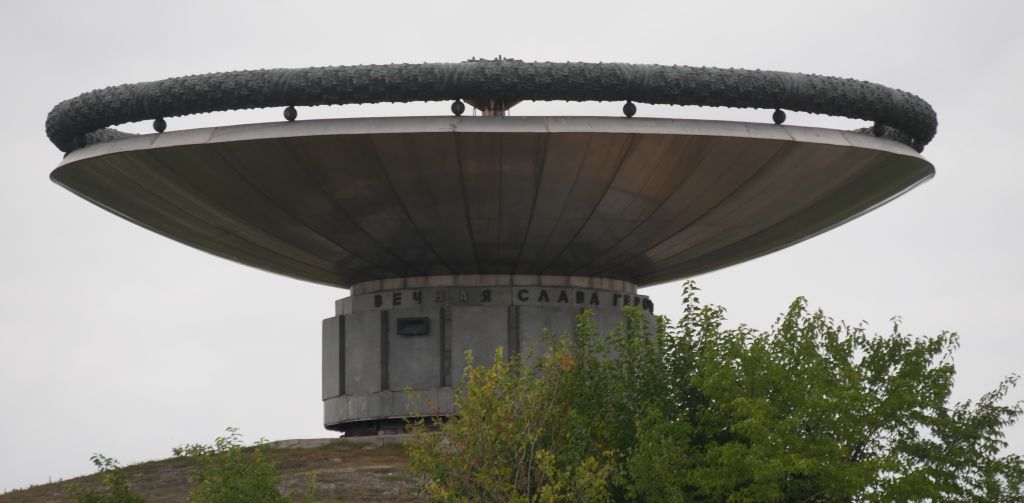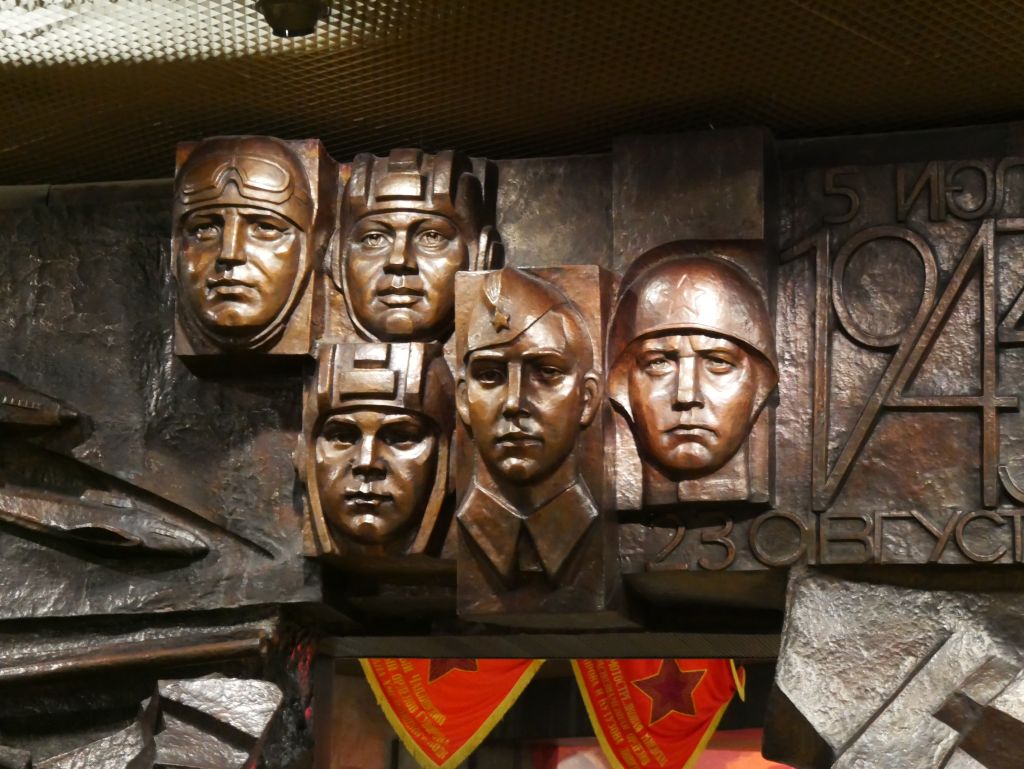Great Patrotic War
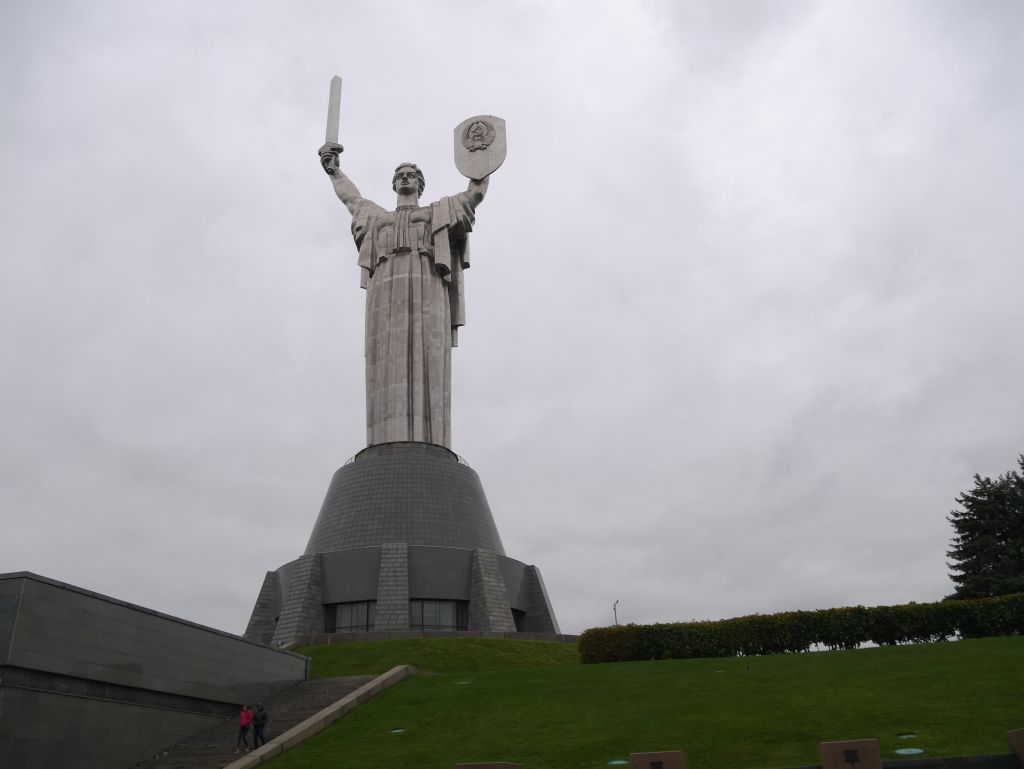
World War II was not a good time for Ukrainians. They were in the middle between the Germans and the Soviets. The Soviets were ruthless in their defeat and exploded buildings as they left town. Civilians who didn't want to fight were caught up in the battles. On another hill of the city is the war museum with a huge steel statue of a lady holding a sword.
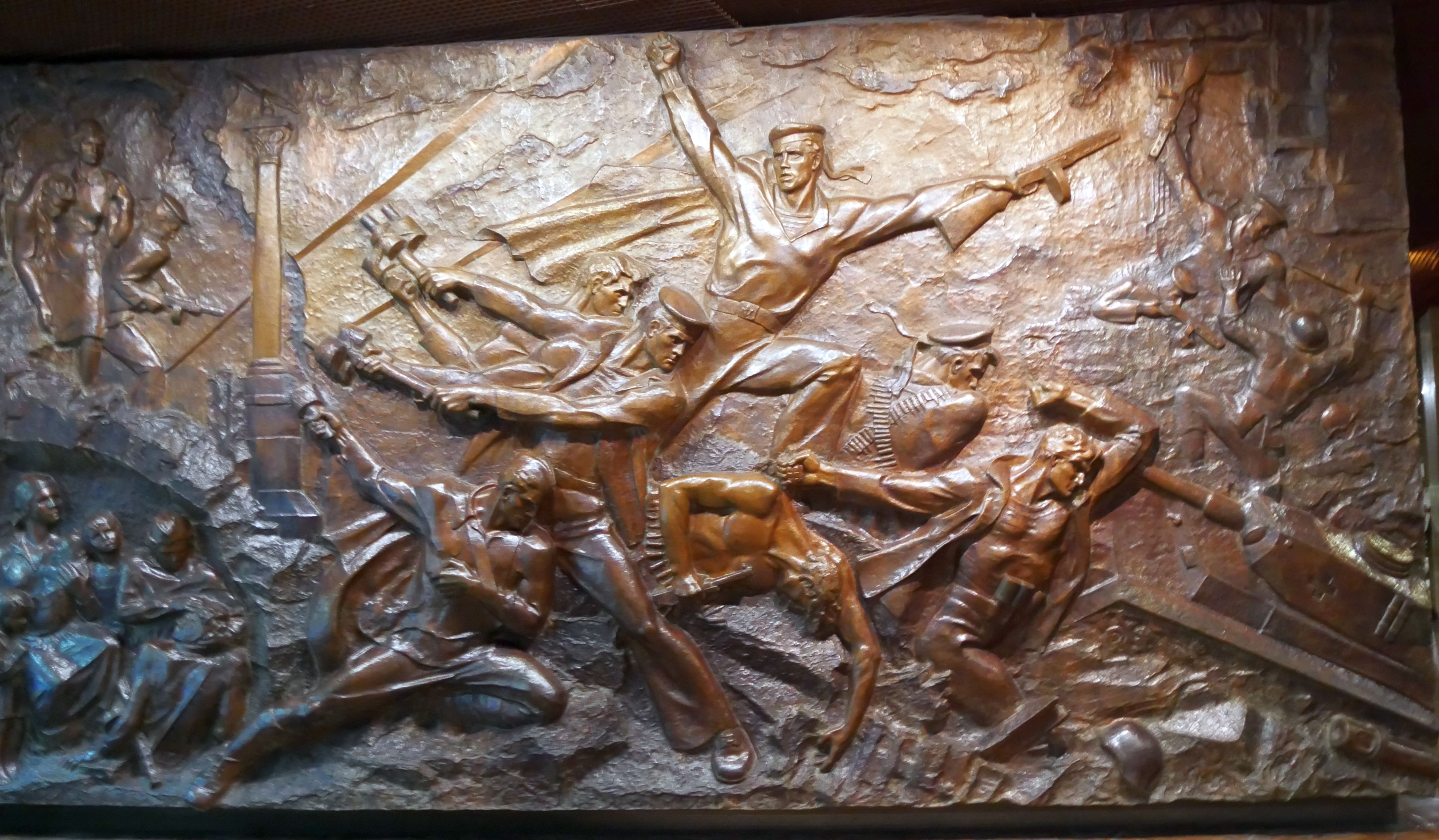
"Motherland" ("Мати-Батьківщина") [was] built by Yevgeny Vuchetich [and] stands 62 meters tall upon the museum building with the overall structure measuring 102 m and weighing 530 tons. The sword in the statue's right hand is 16 m long weighing 9 tons, with the left hand holding up a 13 m by 8 m shield with the Coat of arms of the Soviet Union.
Source:Wikipedia contributors, "National Museum of the History of Ukraine in the Second World War," Wikipedia, The Free Encyclopedia, https://en.wikipedia.org/w/index.php?title=National_Museum_of_the_History_of_Ukraine_in_the_Second_World_War&oldid=797428838 (accessed October 2, 2017).
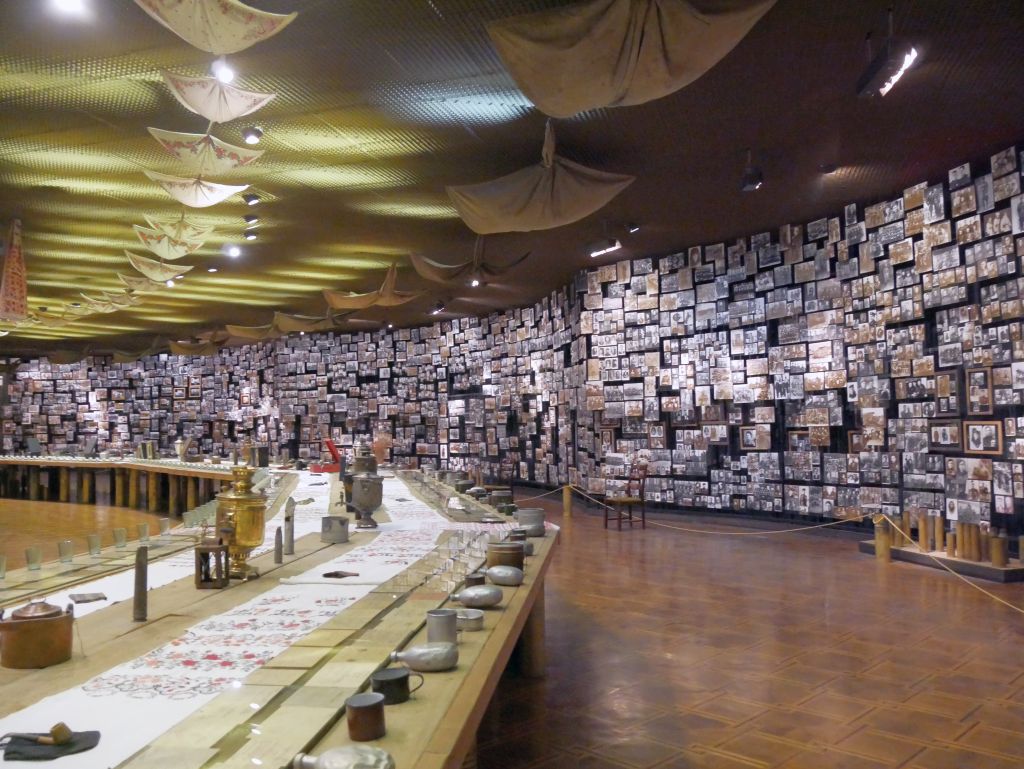
The facility is known as National Museum of the History of Ukraine in the Second World War. And it is one of the largest in the Ukraine displaying over 300,000 artifacts. Sitting on 25 acres the monument overlooks the Dnieper River. There is a plaza with tanks and a large bowl of flames which is the "The Flame of Glory". It seems the flames weren't eternal after all and the fire has been shut down. There is a monumental scuplture called "Crossing of the Dnieper" which features double life sized soldiers crossing the waters of a reflecting pool.
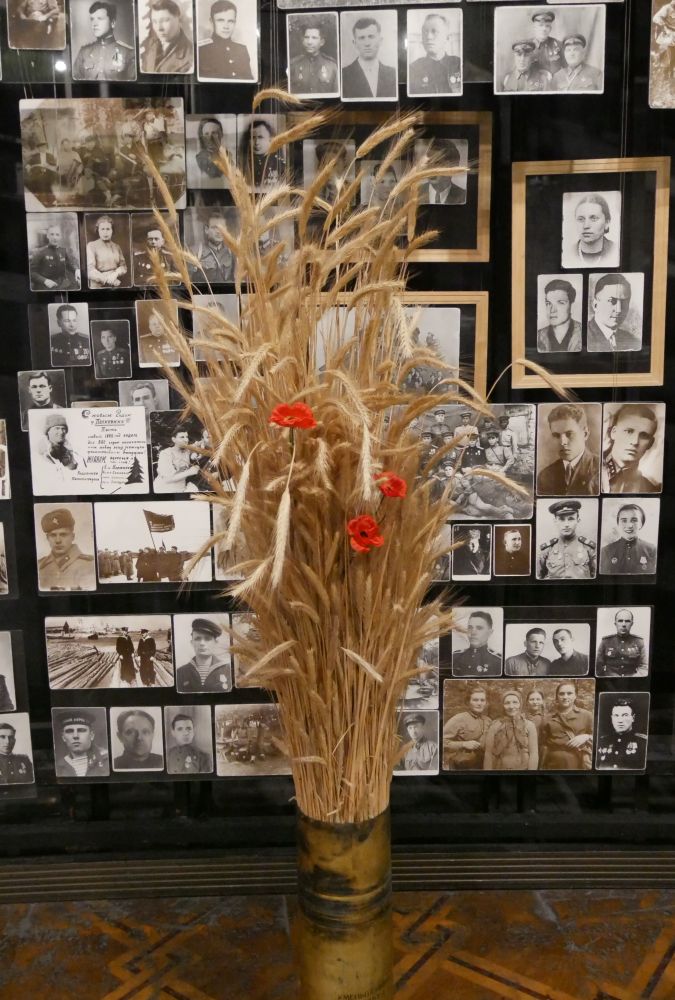
The building is round with two floors of exhibits and a hall of glory. There is a temporary exhibit in the lobby to the fighting taking place now in the Donesk region. One sad reflection on life is the picture of a grandfather who survived WWII in a war to bring eternal peace with a photo of his grandson who died fighting in the 21st century. The building is filled with pieces of weapons and truck as well as photos of those who died during the war.. One lady lost 9 sons to the war. Countless villages were destroyed.

It was opened on May 9 (the Victory Day), 1981, by the Soviet leader Leonid Brezhnev. After independence from the USSR museum was closed for a couple of years while the exhibits were refocused from the USSR to Ukraine. At the same time a Museum dedicated to Vladimir Lennon was dismantled and the building was renamed “Ukraine House.”
Our guide was a young man named Taras. He was knowledgeable and patiently explained the exhibits but words cannot really express some of the sorrow.
There were a lot of mistakes. On display was a cannon with a shield to protect four men who were there to fire it. The gun and the shield where separate pieced and ship separately by train to the front. Not all the guns had shield and not all of the shields had guns because of this bureaucratic cock up.
We didn't stop at some of the other sections like the Afghan war exhibit.
